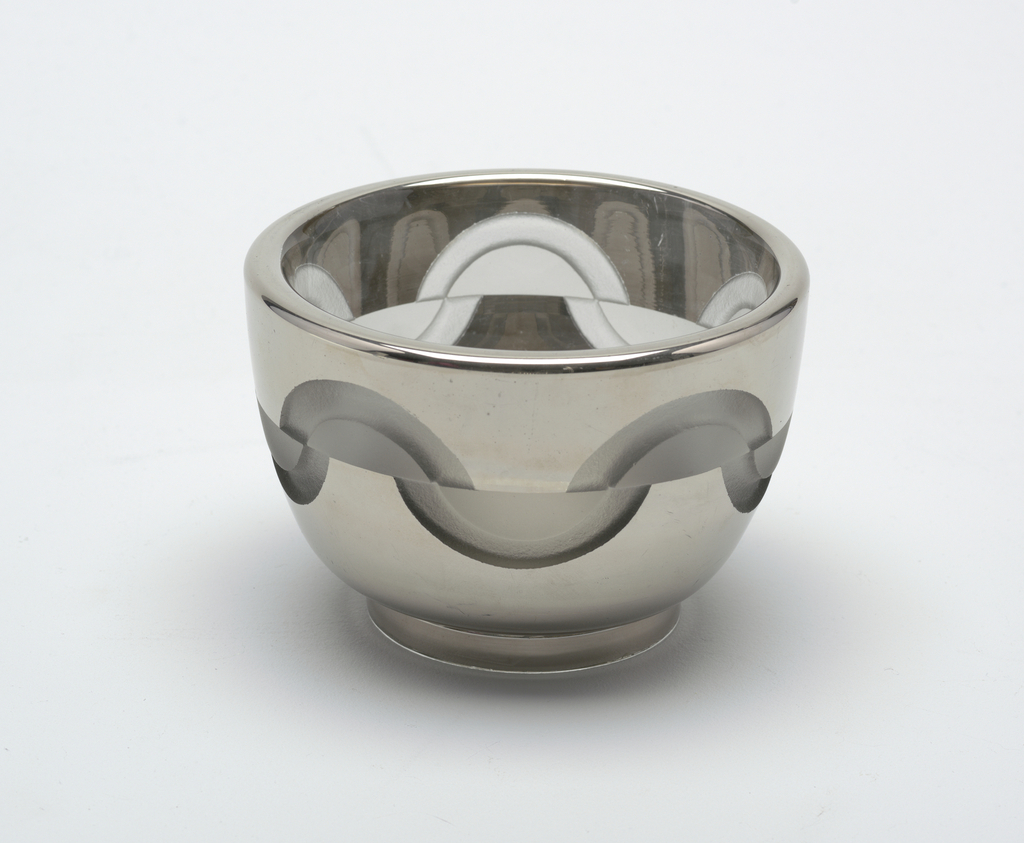Margarete Heymann-Loebenstein-Marks, also known as Grete Marks, was a German ceramicist and painter who studied at the Bauhaus School of Arts in Weimer in 1920–21, alongside Paul Klee and Georg Muche. Prior to this, she had attended the Kunstgewerbeschule in Cologne and studied painting at the Akademie der bildenden Künste in Düsseldorf. Her time at...
Aim—pull—release! This archer draws back his bowstring and prepares to shoot. Peering into the distance, he points his arrow off the poster’s printed page. But designer Richard Roland Holst leaves no doubt about his target: a bullseye hovers just above his head, bearing the Dutch words for “Livelihood.” In this poster promoting the Labor Board...
This sweet little glass bowl evokes the shining, art deco optimism of the 1930s. Designed by Jean Luce and exhibited at the 1937 Exposition Internationale des Arts et Techniques dans la Vie Moderne, it speaks to the period’s interest in democratic materials and tells a story of increasing simplicity of form and decoration in design....
This desk by Paul Frankl is an example of American streamlined furniture of the 1930s. Frankl trained as an architect in Germany and Austria before settling in New York in 1914, as a decorator and designer. He created geometric furniture designs for Frankl Galleries in Manhattan. Frankl’s design philosophy centered on designing for the future,...
The September 1934 issue of The Pottery Gazette and Glass Trade Review features a full-page color advertisement devoted to “Casino” by Royal Doulton. This modern shape debuted a few years earlier and came in three patterns: “Marquis,” “Radiance,” and “Envoy.” Pictured in the advertisement is the earthenware tureen seen here in the museum’s collection. Decorated...
In 1924, the US Secretary of State advised the French government that the United States would not participate in the 1925 International Exhibition of Modern Decorative and Industrial Arts in Paris, because American manufacturers had “little or nothing to display” that would meet the French admissibility requirements of new inspiration, and originality. Yet, America could...
Edgar Brandt showed promise in metalwork since his teenage years. He forged a rose in iron for his graduation masterwork from the École Nationale Professionnelle de Vierzon, located in a traditional site of metallurgy manufacture in central France. Following further training and certification through the Brevet Technicien Superieur Brandt served two years in the 153rd...
Electric lighting has existed since the late nineteenth century. Some of the earliest forms exhibited fine Art Nouveau-era workmanship, while decadent Art Deco forms arose in the mid-1920s. A functional, industrially-inspired modernist aesthetic grew in popularity from the 1930s onward. But to my mind, the 1960s was a time of some of the most inventive and clever lighting design, especially for home interiors. Looking to developments...
More than 44 million people attended the New York World’s Fair in 1939 and two of the many exhibits that visitors would have enjoyed were the Glass Center, a pavilion that marketed glass as the material of the future, and the Town of Tomorrow, a faux suburb of model homes that included the House of...








